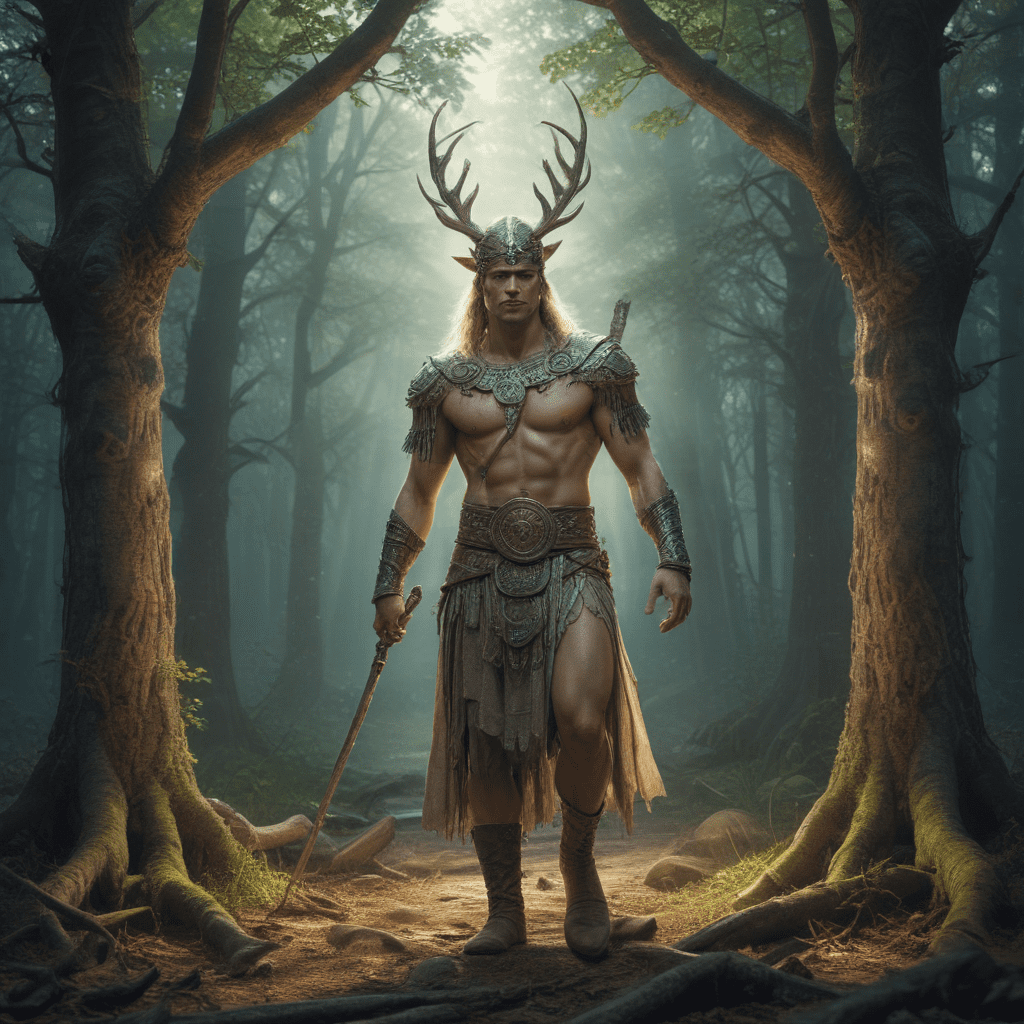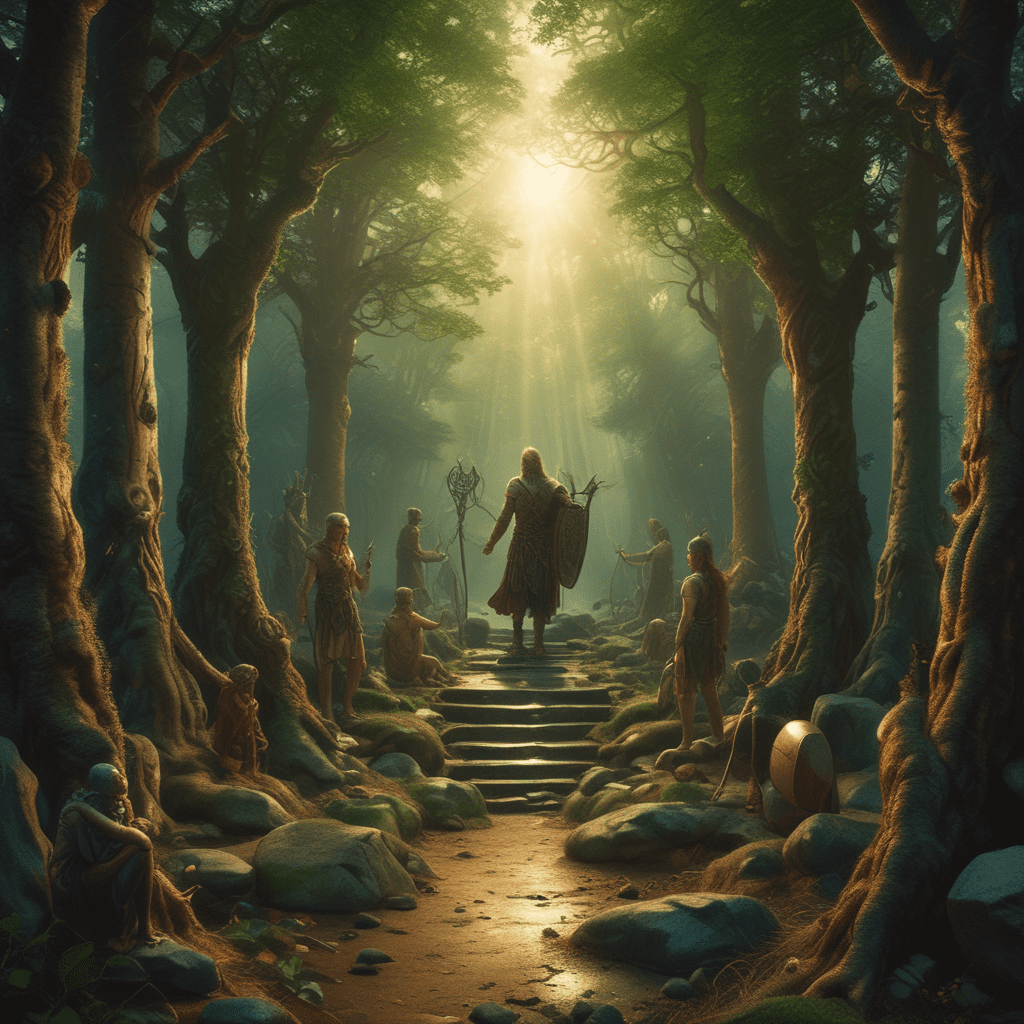Slavic Mythology: Exploring the Realm of the Supernatural
I. Introduction
Slavic mythology, a captivating tapestry of folklore, deities, and otherworldly beings, offers a glimpse into the supernatural beliefs of ancient Slavic cultures. Spanning centuries and regions, Slavic mythology remains a rich source of inspiration for modern-day storytelling and cultural exploration.
II. Origins and Significance
Slavic mythology emerged from the Proto-Slavic era, rooted in the shared beliefs and traditions of various Slavic tribes. It played a central role in shaping societal norms, religious practices, and the understanding of the natural world. Slavic mythology served as a framework for explaining cosmic events, the unknown, and the complexities of human existence.
III. Pantheons of Deities
Slavic mythology is characterized by a vast array of deities, each with distinct powers and responsibilities. The pantheon can be broadly divided into two categories:
A. Higher Gods and Goddesses
The supreme deities in Slavic mythology include Rod, the creator god; Svarog, the god of fire and the forge; and Perun, the god of thunder and lightning. Other prominent deities include Morena, the goddess of winter and death, and Lada, the goddess of love and beauty.
B. Lower Gods and Spirits
Slavic mythology also encompasses a multitude of lesser gods and spirits, such as домовой (domovoi), the household spirit; водяной (vodyanoi), the water spirit; and леший (leshy), the forest spirit. These beings played a significant role in everyday life, influencing the outcome of ventures and the well-being of individuals.
IV. The Supernatural World
Slavic mythology envisions a multifaceted supernatural realm consisting of three distinct spheres:
A. The Three Realms
The Slavic cosmos comprises the upper realm (Prav), the middle realm (Yav), and the lower realm (Nav). Prav represents the heavenly abode of the gods and benevolent spirits, while Yav is the earthly realm inhabited by humans and other creatures. Nav, the underworld, is the realm of the dead and malevolent spirits.
B. Mythical Creatures
Slavic mythology is replete with a diverse array of mythical creatures, including rusalki (water nymphs), vila (forest fairies), and Baba Yaga (a witch associated with both life and death). These creatures possess unique abilities and play significant roles in folktales and legends.
V. Rituals and Practices
Slavic mythology influenced various religious ceremonies and superstitious practices.
A. Religious Ceremonies
Slavic religious ceremonies were often conducted in sacred groves or temples. Priests, known as volkhvs, presided over these rituals, which included offerings to deities, prayers, and divinations.
B. Superstitions and Beliefs
Slavic mythology gave rise to numerous superstitions and beliefs that shaped everyday life. People believed in the power of amulets and charms, the influence of dreams, and the existence of supernatural creatures that could bring both good and evil fortune.
VI. The Slavic Afterlife
Slavic mythology depicts a complex afterlife, involving a journey to the otherworld and a realm of the dead.
A. The Journey to the Otherworld
After death, the soul embarks on a perilous journey to the otherworld, crossing rivers and battling demons. The outcome of this journey depends on one's deeds in life.
B. The Realm of the Dead
The realm of the dead is a vast and mysterious place, ruled by the god Veles. The virtuous dwell in a paradise-like realm, while the wicked are punished in a realm of torment.
VII. The Influence of Slavic Mythology
Slavic mythology has left an enduring legacy, influencing various aspects of culture.
A. In Folklore and Literature
Slavic mythology forms the basis of countless folktales, legends, and literary works. Authors like Nikolai Gogol and Alexander Pushkin drew inspiration from Slavic mythology in their writings.
B. In Contemporary Culture
Slavic mythology continues to resonate in modern-day culture, inspiring video games, movies, and other forms of entertainment. It provides a glimpse into the rich imagination and beliefs of ancient Slavic civilizations.
VIII. Regional Variations
Slavic mythology exhibits regional variations, reflecting the diverse cultures of Slavic peoples.
A. East Slavic Mythology
East Slavic mythology, prevalent in Russia, Belarus, and Ukraine, features deities like Perun, Veles, and Svarog. It emphasizes the importance of nature spirits and household deities.
B. West Slavic Mythology
West Slavic mythology, found in Poland, the Czech Republic, and Slovakia, is characterized by a strong belief in the power of magic and the role of ancestors in everyday life.
C. South Slavic Mythology
South Slavic mythology, present in Serbia, Croatia, and Bulgaria, incorporates elements of Balkan and Mediterranean mythologies. It features deities like Rod, Morana, and Svarožić.
IX. Comparative Mythology
Slavic mythology shares similarities with other mythologies, such as Norse, Greek, and Roman. Comparative mythology explores these connections, revealing common themes and motifs across different cultures.
X. Conclusion
Slavic mythology is a captivating and multifaceted realm that provides insights into the beliefs, rituals, and supernatural world of ancient Slavic cultures. Its influence continues to shape folklore, literature, and contemporary culture, offering a glimpse into the rich imagination and spiritual heritage of Slavic peoples.
Frequently Asked Questions (FAQs)
Q: Who was the supreme god in Slavic mythology?
A: Rod was the creator god and supreme deity in Slavic mythology.
Q: What are the three realms in Slavic mythology?
A: The three realms are Prav (heavenly realm), Yav (earthly realm), and Nav (underworld).
Q: What type of creatures are rusalki?
A: Rusalki are water nymphs, often depicted as beautiful but dangerous creatures.
Q: What is the name of the witch associated with both life and death in Slavic mythology?
A: Baba Yaga is the witch associated with both life and death in Slavic mythology.
Q: What is the journey undertaken after death in Slavic mythology?
A: After death, the soul embarks on a perilous journey to the otherworld, crossing rivers and battling demons.



